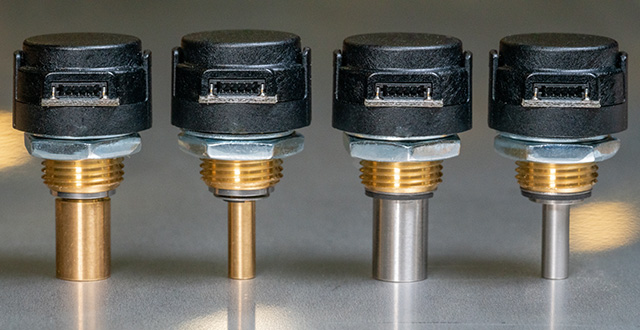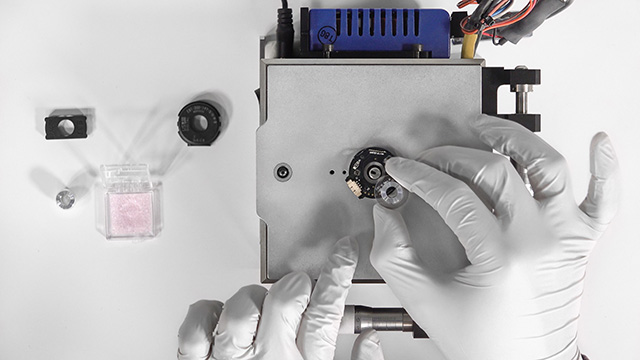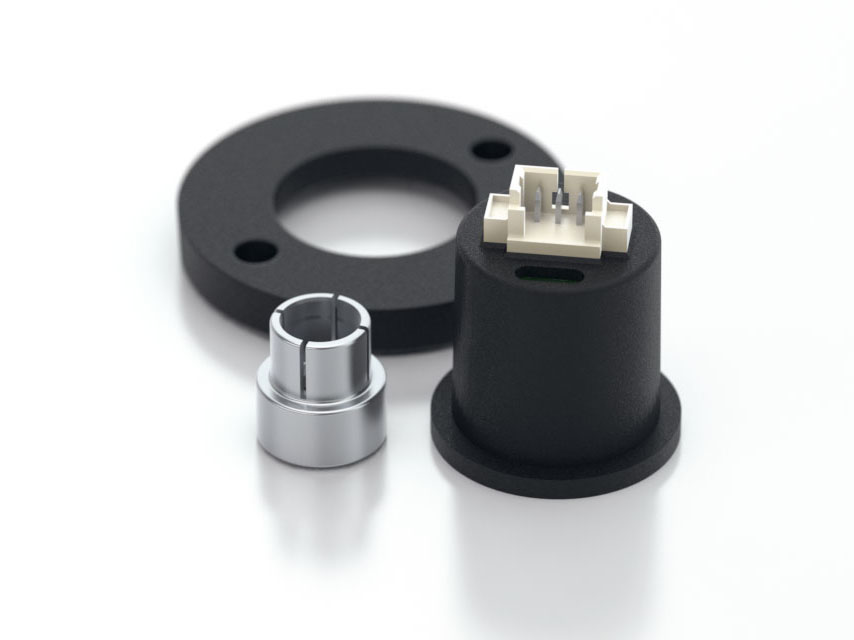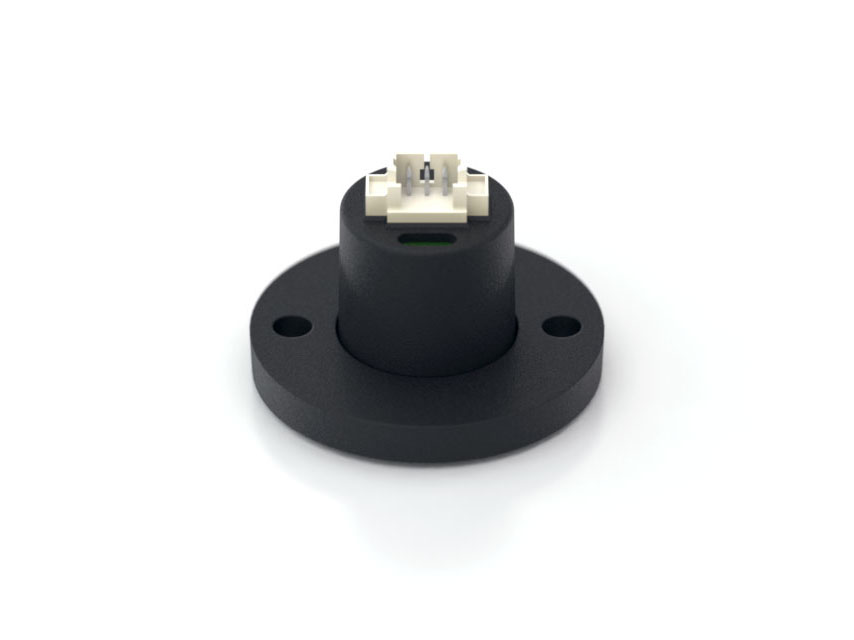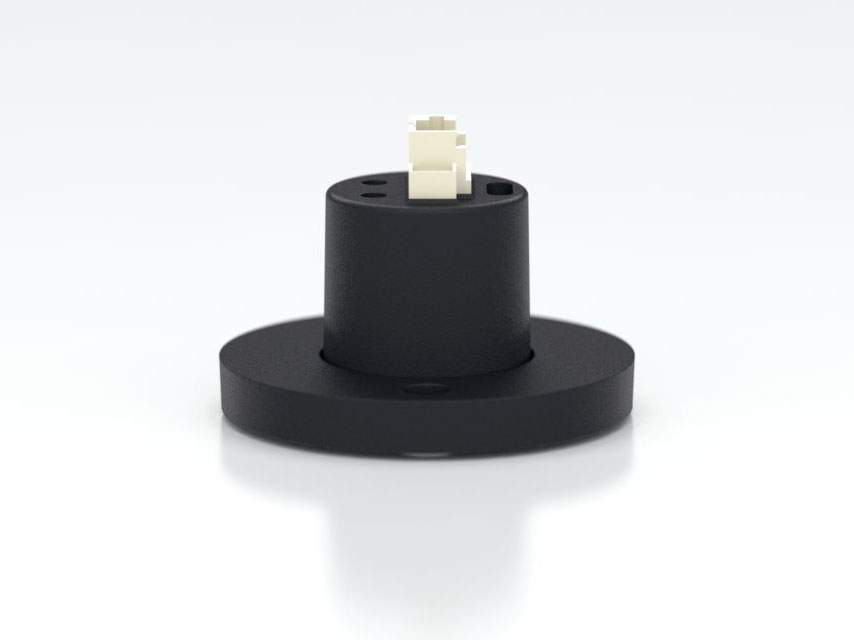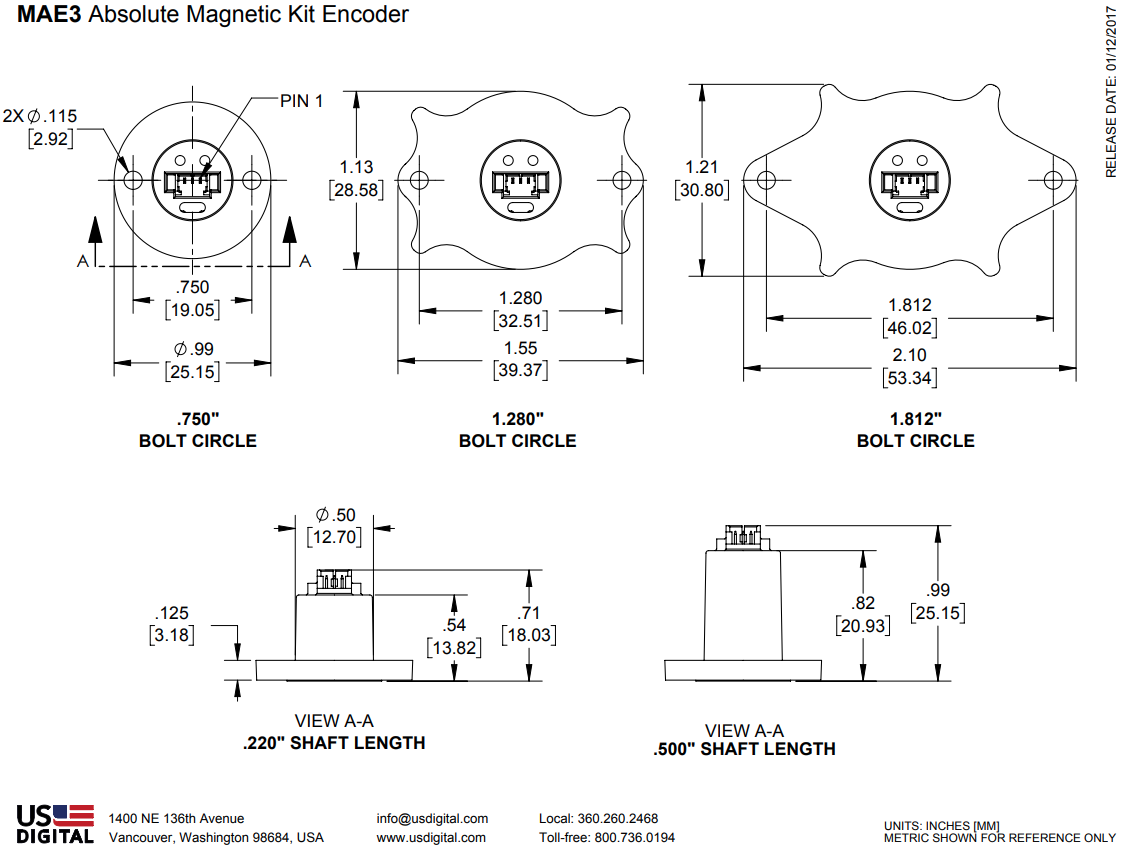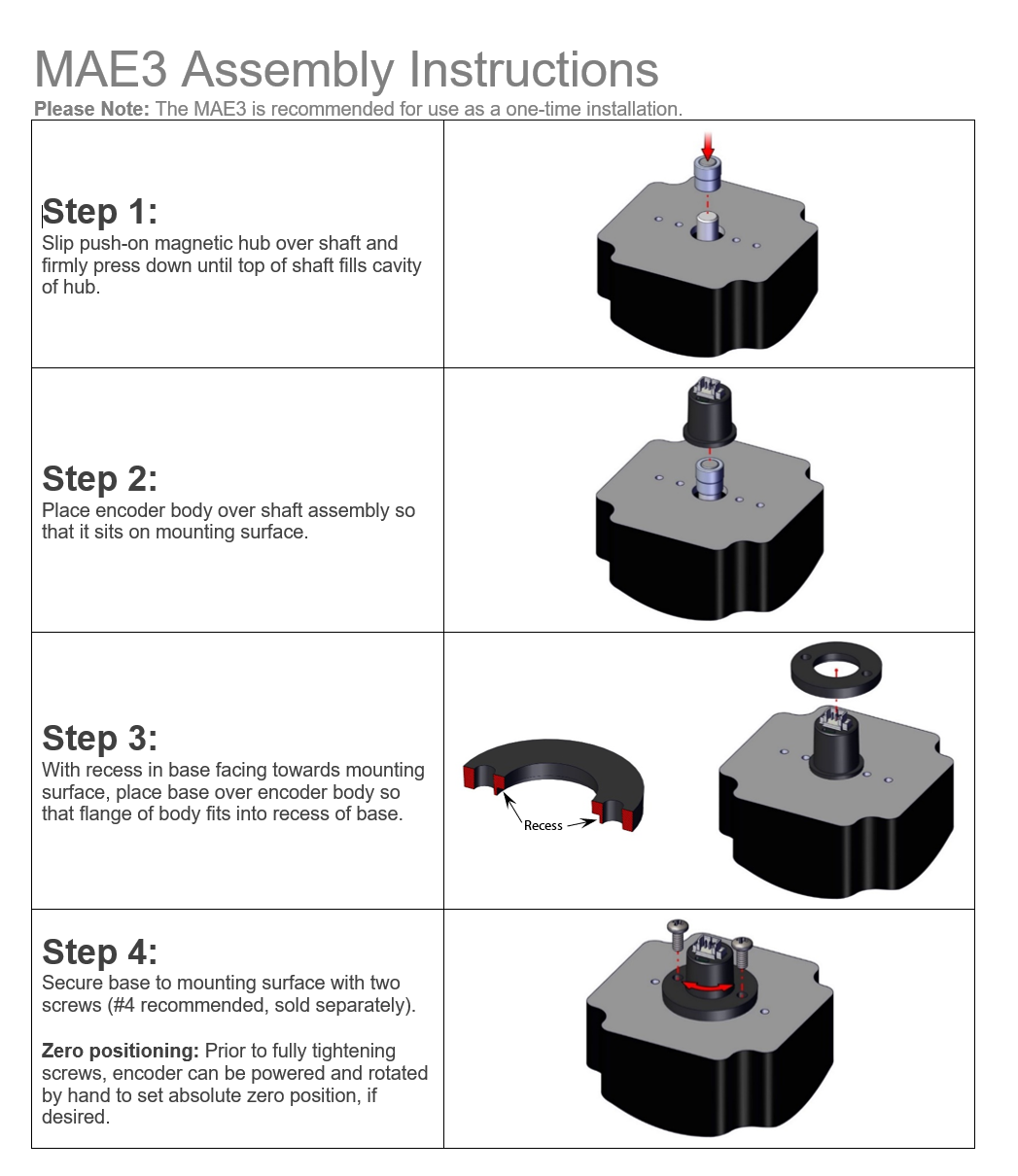The magnetic sensor chip in the MAE3 has an on-chip RC oscillator which is factory trimmed to 5% accuracy at room temperature (10% over full temperature range). This tolerance influences the sampling rate and the pulse period of the PWM output. If only the PWM pulse width ton and nominal pulse period are used to measure the angle, the resulting value also has this timing tolerance. However, this tolerance can be canceled by measuring both ton and toff and calculating the angle from the duty cycle.
| PARAMETER |
MIN. |
TYP. |
MAX. |
UNITS |
PWM Frequency (-40C to 125C)
10-bit
12-bit |
0.877
220 |
0.975
244 |
1.072
268 |
kHz
Hz |
Minimum Pulse Width
10-bit
12-bit |
0.95
0.95 |
1.00
1.00 |
1.05
1.05 |
uS
uS |
Maximum Pulse Width
10-bit
12-bit |
974
3892 |
1025
4097 |
1076
4302 |
uS
uS |
Internal Sampling Rate
10-bit
12-bit |
9.38
2.35 |
10.42
2.61 |
11.46
2.87 |
kHz
kHz |
Propagation Delay
10-bit
12-bit |
|
|
48
384 |
uS
uS |
| Output Transition Noise, 12-bit version (1) |
|
.03 |
|
Deg. RMS |
| Output Transition Noise, 10-bit version (1) |
|
.12 |
|
Deg. RMS |
| Output High Voltage (VOH: @4mA Source) (2) |
Vcc -0.5 |
|
|
V |
| Output Low Voltage (VOL: @4mA Sink) (2) |
|
|
0.4 |
V |
(1) Transition noise is the jitter in the transition between two adjacent position steps.
(2) Continuous short to +5V or ground will not damage the MAE3.
10-bit PWM:
x = ((t on * 1026) / (t on+ t off)) -1
If x <= 1022, then Position = x
If x = 1024 then Position = 1023

12-bit PWM:
x = ((t on * 4098) / (t on+ t off)) -1
If x <= 4094, then Position = x
If x = 4096 then Position = 4095

